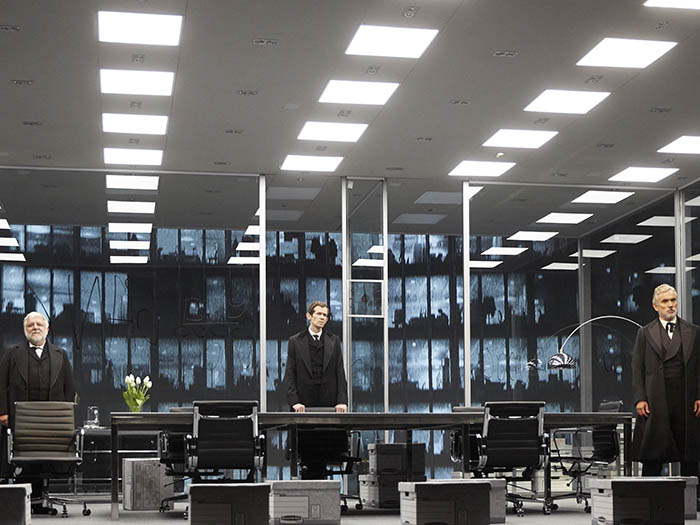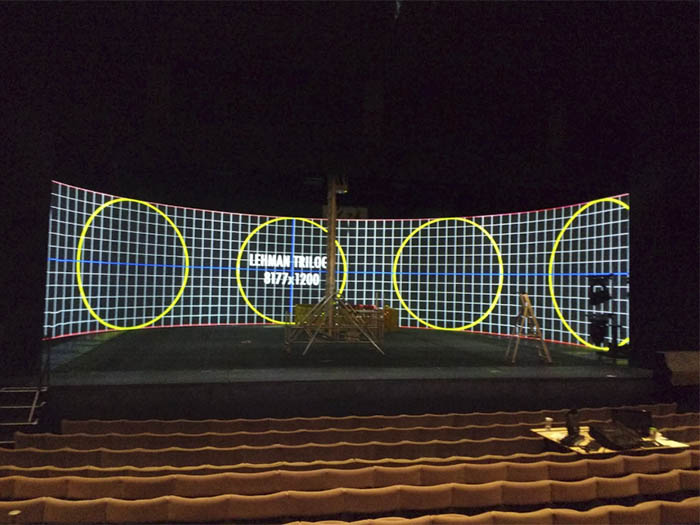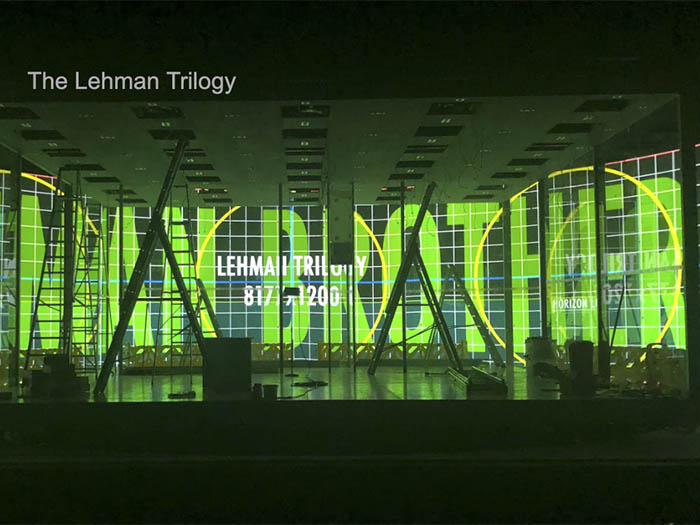This website uses cookies so that we can provide you with the best user experience possible. Cookie information is stored in your browser and performs functions such as recognising you when you return to our website and helping our team to understand which sections of the website you find most interesting and useful.
National Theatre
Situated on the south bank of the Thames in London, the National Theatre is one of the United Kingdom’s most prominent publicly funded performing arts venues. It presents up to 25 new shows every year; as well as appearing in its own theatres, these productions often transfer to the West End and tour around the country, as well as on Broadway in New York and around the world. Productions are also broadcast to over 2,000 cinemas worldwide through National Theatre Live or streamed free to UK schools. The National Theatre continually innovates its service to its audience and is not afraid to embrace new technology. For example, it was the first theatre to broadcast a live 4K production to cinemas and operates a dedicated Immersive Storytelling Studio to explore ways to tell stories using emerging digital technologies.
In keeping with this forward-thinking ethos, it recently adopted the disguise OmniCal camera-based projector calibration engine to aid complex production design. The National Theatre use projectors on stage in numerous ways to enhance productions, from supplementary scenic design through to narratively mapped visual objects and video walls. The OmniCal engine has been designed to improve projection quality and set up time. It works by capturing hundreds of images of the stage and creating a ‘Point cloud’, accurately calibrating projectors, and conforming pre-existing surface meshes to match reality. This is a step change in National Theatre’s projection mapping workflows – no longer a multi-day process to map an object neatly, the capture process takes a matter of minutes. Final adjustments can also be carried out offline, not intervening with projection surfaces and enabling other disciplines in the space to proceed with their technical time. Whether it’s lighting, sound, set or rehearsals, everyone at the National Theatre benefits from the use of OmniCal on a production.
The National Theatre is a ‘repertory theatre’ meaning that it presents different shows with short or sporadic runs, so the theatre is continually installing sets and specialist equipment for a performance and then quickly removing everything to facilitate the next show, as often as twice a week. The ability to perform a video line up quickly is crucial in order to turn shows around fast, as the team needs to be able to fully rehearse the projection cues in conjunction with lighting prior to a performance.
Previously, the National Theatre had been finding it increasingly difficult to use traditional 2D media server projection to map onto 3D surfaces and complex shapes. It needed a solution that allowed the team to be more accurate with the projection surfaces whilst achieving better results, in less time. The disguise OmniCal system offered the best option for National Theatre and complimented the two disguise 2x4pro servers that the team had invested in a few years ago. Plus, the theatre’s proximity to the disguise HQ was also helpful in enabling them to build a good rapport and be confident of a close working relationship from the start.
National Theatre’s new OmniCal set up was powered by two 2x4pro servers with DVI VFC cards and four designer laptops. The team also followed up with a second investment of two new disguise Solo servers which feature options for HDMI and SDI capture, pro audio, 10GB networking ports and two 4K outputs. Used during show time, the solo enables the team to design, sequence and play back shows with fixed storage, 2TB SSD and full redundancy capabilities.
The first National Theatre show to benefit from the OmniCal system set-up was The Lehman Trilogy, directed by Sam Mendes and performance in the Lyttelton Theatre. The show features a large 27m x 6m curved wall that was projected upon throughout the performance to create the horizon and world outside of a revolving glass cube. The disguise OmniCal system enabled five Panasonic 21k projectors with .38 lenses to project accurately onto this huge curved screen. The team were also able to complete the line up on a turnaround day in just 60 minutes.
As fortune would have it, the first complex show for which the team planned to use disguise was with video designer, Luke Halls, who has been using the disguise solutions for many years. “This gave us added confidence to jump into a new workflow for this show” says Dominic Bilkey, Head of Sound and Video at National Theatre. “On the whole we have been very impressed with OmniCal’s capabilities. It enables us to continue to be bold and deliver the designers’ wishes without having to compromise on any aspect – especially considering that each show needs to be able to turn around fully in such a short time.”
Following the success of The Lehman Trilogy, the National Theatre has implemented the disguise OmniCal engine and solo server for a number of other shows. To date, these have included Shakespeare’s Antony & Cleopatra starring Ralph Fiennes and Sophie Okonedo in the Olivier Theatre, and I’m Not Running by David Hare and Julie starring The Crown’s Vanessa Kirby, both in the Lyttelton Theatre.
The Lehman Trilogy design has been praised immensely with The Times giving the show a 5* review: “The set, by Es Devlin, is a thing of genius, a rotating see-through cube divided into various offices. One is the original shop in Montgomery, Alabama, another the first New York office (after the Civil War, the brothers moved north and diversified into coffee and trains). Behind the cube is a curved screen for video projections of the sea, prairie or skyscrapers. The Depression years tumble into a brave new world where money itself is the commodity.”
Following its run at National Theatre in London, The Lehman Trilogy is also transferring to New York and the West End in 2019.



